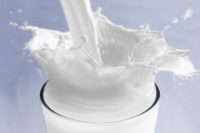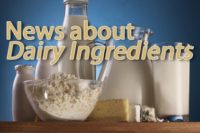Innovations in probiotic dairy products are on the rise. This is a reflection of the increasing demand for probiotics due to consumers’ interest in health and wellbeing. Dairy was the third most commonly named “functional food” in the 2011 Functional Foods Survey conducted by the International Food Information Council.
Yogurt is the probiotic market driver for all food categories, and spoonable and drinkable yogurt account for more than 90% of all probiotic dairy product launches. Global sales of probiotic yogurt grew from $6.8 billion in 2003 to $13.7 billion in 2008, and sales are predicted to double in value by 2013.
Getting acquainted
A regulatory definition of probiotics doesn’t exist, but the Food and Agriculture Organization’s definition is widely accepted: Live microorganisms administered in adequate amounts which confer a beneficial health effect on the host.
Most probiotics are bacteria, some are yeasts; but not all live active cultures (LAC) meet the definition of a probiotic. Probiotics are classified by genus, species and strain. For example, Lactobacillus is the genus, casei is the species and Shirota is the strain. Each probiotic strain is unique and has a unique effect in the body. Therefore, the efficacy of each strain is evaluated using published research regarding the particular strain and amount shown to confer a certain health effect.
“We’re still trying to understand how probiotics function in the GI [gastrointestinal] tract,” said Chris Cifelli, the director of nutrition research at the Dairy Research Institute, Rosemont, Ill. “Probiotics may interact with gut bacteria, cells lining the digestive tract and immune cells in the digestive tract; or they may secrete factors that may influence the body.”
Controlled human studies suggest a wide range of health benefits from consuming probiotics, mainly due to their effect on immune function or on microbes colonizing the body. Probiotics may help prevent antibiotic-associated diarrhea, help prevent and treat infectious diarrhea, manage pouchitis, improve symptoms of irritable bowel syndrome and be effective as an adjunct to anti-H. pylori therapy. However, a particular health effect may be documented for only one or a limited number of probiotic strains.
Staking a claim
Although there are no Food and Drug Administration authorized health claims for probiotics in the United States, manufacturers of probiotic foods and food ingredients can communicate health-related benefits. A structure/function claim, such as “helps support digestive health,” can be used if adequately supported by sound science, is truthful and is not misleading.
“If a processor is getting probiotics from a supplier, the supplier should help gather [scientific evidence] for the structure/function claim, but the processor is ultimately responsible for the accuracy of that information,” said David McCoy, vice president of product research at the Dairy Research Institute.
Demonstrating a probiotic strain’s health benefit is no easy task. Strict regulations make it challenging to secure approval.
“This hasn’t stopped companies from researching probiotics’ health benefits,” said David Turner, global food analyst in the U.K. office of Mintel. “But since they haven’t been able to win approval, they’ll have to work harder and perhaps look beyond gut health.”
Probiotics and dairy in relationship
Probiotics used commercially in dairy — most often of the Lactobacillus and Bifidobacterium genera—are purified, grown to large numbers, concentrated and preserved, usually as 100 billion CFU per gram in the United States
Since probiotics are only of value if they’re alive, they’re added to dairy post-pasteurization, McCoy explained. When processing fluid milk, probiotics are added to the surge tank just before bottling. In yogurt and other fermented products, probiotics are added at the same time cultures are added. When ice cream is properly frozen, probiotic ingredients survive throughout the product’s shelf life.
“Probiotics are delicate. They die pretty easily if they get too moist or warm. Those are the main problems,” said Michael Shahani, chief operating officer of Nebraska Cultures, Walnut Creek, Calif. “They’re more stable in freeze-dried form. The issue is: How to get probiotics in products people will consume and how to keep probiotics alive until people consume the product. Manufacturers need to put probiotics in products where people think they belong. That’s why yogurt with added probiotics has been successful, but not cheese. People are used to live active cultures in yogurt and are open to yogurt being ‘extra probiotic.’”
Dairy products may be an advantageous delivery vehicle for probiotics, according to the California Dairy Research Foundation. Dairy foods have a lot to offer:
• The calcium in dairy buffers stomach acid, possibly improving probiotic viability.
• Refrigerated storage of dairy products helps promote probiotic stability (although lactic acid
in yogurt can be a barrier).
• Dairy’s relatively short shelf life meshes with probiotics’ life span.
• Dairy’s nutrients nourish probiotics.
“We’re not sure of the exact nutrients in dairy that help probiotics survive, but we know there is a synergy between dairy and probiotics,” Cifelli said. “It’s probably the whole nutrient package in dairy, including lactose and protein.”
Dairy contains prebiotics, components humans can’t digest that are probiotics’ preferred food source. It is possible that products containing both probiotics and prebiotics, called synbiotics, may be more effective than probiotics or prebiotics alone.
The future of probiotic dairy
Dairy has competition in the probiotic market: “Probiotic juices may steal market share from dairy drinks,” said Mintel’s Turner. “They’ve been a trend in the last year or so, although the market is small.”
Turner suggests promoting consumption of a variety of probiotic dairy products throughout the day instead of a daily shot. “It’s a good strategy for brands that can spread across multiple categories,” he said.
Derek Miller, director of digital marketing with Lifeway, believes the opportunities for innovation in probiotic dairy are “almost limitless.” Lifeway has introduced the majority of its new kefir products within the past three years.
In terms of health benefits, “Several opportunities may be coming down the pike such as the links between probiotics and athletic performance, geriatric health, obesity and brain function/mood,” McCoy said. “However, claims will require substantiation and the science isn’t there yet.”
Cifelli adds that digestive health research is a priority for the Dairy Research Institute and he expects opportunities to develop over the next five to 10 years. Until then, “leverage the synergy between dairy and probiotics,” suggested McCoy. “Dairy has a long association with live active cultures, is perceived as healthy and is a very good functional food package. Dairy’s nutrients — plus probiotics — make healthy eating easier.”





